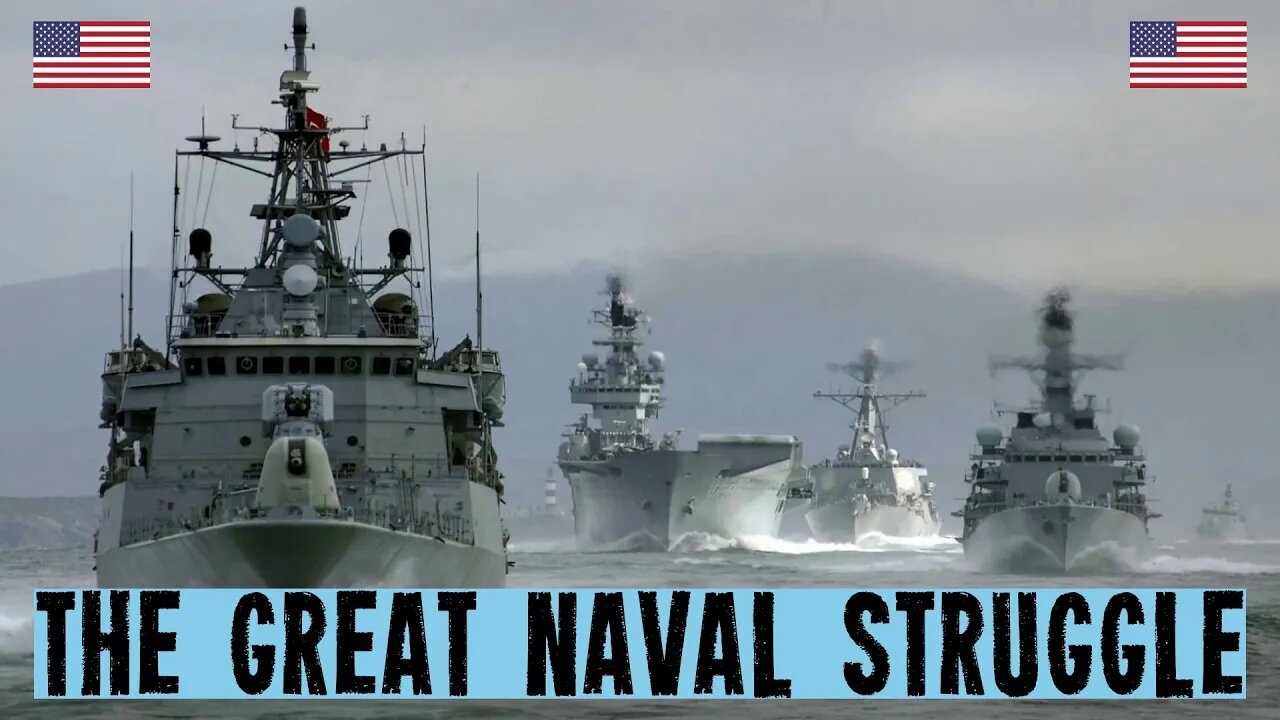Premium Only Content

The Navy's Growing Struggle Maintaining Ships and Protecting National Security
Connect with us on Facebook: https://www.facebook.com/profile.php?id=100087951995959
Twitter: https://twitter.com/shieldwall_d
Chapters:
The great naval struggle - 0:00
Decline in Ship Maintenance and Readiness - 0:29
Strained Relationships - 1:21
Conclusion and Closing Remarks - 3:38
The United States Navy has been facing numerous challenges in maintaining and keeping its ships at sea. These issues have resulted in a less-prepared force against potential threats, such as China, and have had significant consequences on the Marine Corps. This report will examine the factors contributing to the Navy's maintenance struggles, the consequences on national security, and potential solutions for addressing these challenges.
The Decline in Ship Maintenance and Readiness.
The Navy's inability to keep its ships running has led to a decrease in overall readiness. Maintenance delays have grown from an average of five days in 2011 to 19 in 2021. Steaming hours have also decreased, reflecting a decline in operational efficiency. One of the primary challenges facing the Navy is a shortage of spare parts for its ships. Supply chain shortfalls have forced Navy officials to resort to reusing or moving parts from one ship to another. From 2011 to 2021, there has been an increase in the number of ships reporting serious parts failures.
The Strained Relationship Between the Navy and Marine Corps.
The Navy's inability to maintain its fleet, especially the Wasp-class amphibious assault ships, has had a significant impact on the Marine Corps. These ships play a vital role in transporting Marines around the world, allowing them to carry out missions such as disaster relief and civilian evacuations. As these ships increasingly face serious parts failures, the Marine Corps' ability to perform its tasks effectively is jeopardized. The Marine Corps has expressed frustration with the Navy's maintenance problems, accusing it of failing its national security mission by not properly maintaining the ships. Some officials believe that the Navy leadership seems content with providing the "minimum requirement" to the Marine Corps, even though they are struggling to meet that standard. This dissatisfaction has led to tensions between the two branches. Marine Corps Commandant Gen. David Berger has publicly expressed concerns about the Navy's maintenance struggles. In a recent statement to Congress, Berger shared his regret over the Marines' inability to help in two major crises due to the lack of available Navy ships for positioning units in nearby waters. This admission highlights the negative consequences that the Navy's maintenance issues have on the Marine Corps and its mission readiness. The Navy's maintenance challenges have also created tensions in budget proposals and future planning for both branches. The Navy has suggested reducing its amphibious ship numbers by retiring older dock landing ships and pausing orders for San Antonio-class amphibious transport dock ships. However, the Marine Corps opposes these moves, as they would violate the legally mandated 31-ship threshold and further hinder their ability to fulfill missions. To address the strained relationship between the Navy and Marine Corps, both branches must work together to find viable solutions to the maintenance issues at hand. This may involve revisiting budget proposals, prioritizing the maintenance of ships critical to Marine Corps operations, and improving communication and cooperation between the two branches. A renewed focus on addressing maintenance challenges will be essential in restoring trust and ensuring that the Marine Corps can rely on the Navy to support its missions effectively. The future of the Navy is uncertain, as it faces difficult decisions about how to address its maintenance challenges.
====================================
#shieldwall #shieldwalldefense
We appreciate all of our viewers and supporters. Thank you.
====================================
Fair use is the right to use a copyrighted work under certain conditions without permission of the copyright owner. The doctrine helps prevent a rigid application of copyright law that would stifle the very creativity the law is designed to foster. It allows one to use and build upon prior works in a manner that does not unfairly deprive prior copyright owners of the right to control and benefit from their works. Together with other features of copyright law like the idea/expression dichotomy discussed above, fair use reconciles the copyright statute with the First Amendment.
====================================
-
 LIVE
LIVE
Benny Johnson
1 hour ago🚨CIA Whistleblower SPEAKS! Tulsi Gabbard Joins LIVE to Expose New Obama-Gate BOMBSHELL: 'Burn Bags'
8,886 watching -
 LIVE
LIVE
LFA TV
13 hours agoLFA TV ALL DAY STREAM - THURSDAY 7/31/25
4,767 watching -
 LIVE
LIVE
JuicyJohns
3 hours ago $1.15 earned🟢#1 REBIRTH PLAYER 10.2+ KD🟢$500 GIVEAWAY SATURDAY!
106 watching -
 43:09
43:09
VINCE
2 hours agoSPECIAL: "Obamagate" DEEP-DIVE with Gen. Mike Flynn, Mike Benz and Paul Sperry
87.1K58 -
 LIVE
LIVE
The Big Mig™
3 hours agoFBI Burn Bags, Hidden SCIF’s & Truth About Mar-A-Lago Raid
5,155 watching -
 1:50:11
1:50:11
Dear America
3 hours agoFBI Discovers THOUSANDS Russia Hoax Docs In “Burn Bags”!! + Pelosi EXPOSED For Insider Trading!!
103K76 -
 1:27:12
1:27:12
Tucker Carlson
2 hours agoTony Aguilar Details the War Crimes He’s Witnessing in Gaza
71.6K112 -
 LIVE
LIVE
Badlands Media
6 hours agoBadlands Daily: July 31, 2025
4,324 watching -
 2:16:31
2:16:31
Matt Kohrs
12 hours agoHUGE Earnings Beat, Inflation Data & New Record Highs || Live Trading Options & Futures
28.7K2 -
 19:44
19:44
Bearing
3 hours agoWorld’s CRAZIEST Feminist Wants AMERICANS to WAKE THE F*** UP 🦅💥
18.2K35